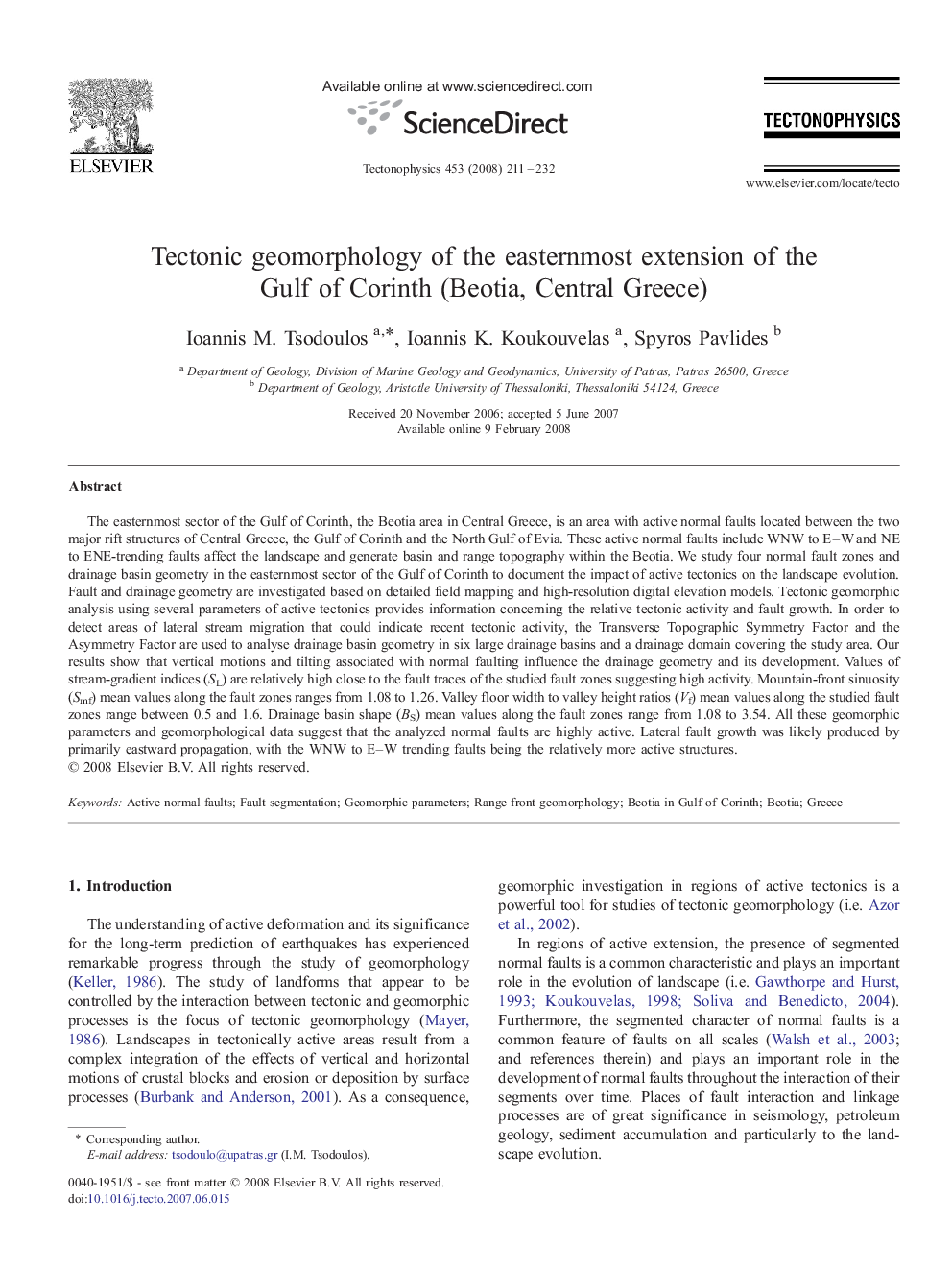| Article ID | Journal | Published Year | Pages | File Type |
|---|---|---|---|---|
| 4694540 | Tectonophysics | 2008 | 22 Pages |
The easternmost sector of the Gulf of Corinth, the Beotia area in Central Greece, is an area with active normal faults located between the two major rift structures of Central Greece, the Gulf of Corinth and the North Gulf of Evia. These active normal faults include WNW to E–W and NE to ENE-trending faults affect the landscape and generate basin and range topography within the Beotia. We study four normal fault zones and drainage basin geometry in the easternmost sector of the Gulf of Corinth to document the impact of active tectonics on the landscape evolution. Fault and drainage geometry are investigated based on detailed field mapping and high-resolution digital elevation models. Tectonic geomorphic analysis using several parameters of active tectonics provides information concerning the relative tectonic activity and fault growth. In order to detect areas of lateral stream migration that could indicate recent tectonic activity, the Transverse Topographic Symmetry Factor and the Asymmetry Factor are used to analyse drainage basin geometry in six large drainage basins and a drainage domain covering the study area. Our results show that vertical motions and tilting associated with normal faulting influence the drainage geometry and its development. Values of stream-gradient indices (SL) are relatively high close to the fault traces of the studied fault zones suggesting high activity. Mountain-front sinuosity (Smf) mean values along the fault zones ranges from 1.08 to 1.26. Valley floor width to valley height ratios (Vf) mean values along the studied fault zones range between 0.5 and 1.6. Drainage basin shape (BS) mean values along the fault zones range from 1.08 to 3.54. All these geomorphic parameters and geomorphological data suggest that the analyzed normal faults are highly active. Lateral fault growth was likely produced by primarily eastward propagation, with the WNW to E–W trending faults being the relatively more active structures.
